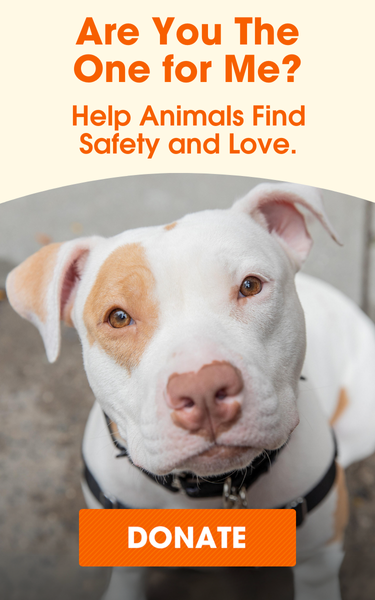
What Is a Sensory Garden and How Does It Help Fearful Dogs?

At the ASPCA Behavioral Rehabilitation Center (BRC), our behavior, medical and operations experts work day in and day out with extremely fearful dogs in hopes of helping them become companion animals. At this unique facility, our staff use a variety of techniques to decrease these dogs' fear of everyday things they'll experience as pets. With helper dogs by their sides to boost confidence, dogs in treatment learn to walk on-leash, interact with people, enjoy petting and explore the world—often starting with, surprisingly, a garden! But this garden is special. It's a sensory garden!
The BRC’s sensory garden is an area where all the dog’s senses can come into play. They have an opportunity to see, hear, smell, touch and even taste items in the garden, which includes a variety of obstacles, textures, scents and plants. For many of our dogs who come from environments where they lived in extreme isolation, the items in the sensory garden are an entirely new experience. By allowing them to engage in natural behaviors like sniffing and investigation, dogs are provided with experiences critical to their psychological well-being, and they can introduce themselves to new sights, sounds, smells and substrates. Encountering these things in a safe environment with support from behavior specialists builds the dogs’ confidence, showing them that new things don’t have to be scary, and that the world can be a great place to explore and enjoy.

Jennifer White, a Behavior Rehabilitation Specialist at the BRC, was a major player in the implementation of the sensory garden and, along with a cross-branch team of BRC staff and a volunteer master gardener, helps to keep up with it year-round.
“At the BRC, much of our landscape around the facility was uninteresting,” Jenny explains. “It consisted of red dirt, some grass and a few trees and shrubs. As a Tellington TTouch practitioner and Canine Nosework instructor, I understand how movement, new, safe experiences and sniffing can increase confidence and reduce stress in dogs. Developing an enriching sensory garden merges these activities and gives dogs the opportunity to choose their own adventure. It also gives our fearful dogs something to do when they’re unsure of what to do.”

The sensory garden can also be helpful for dogs who struggle in certain areas, like getting into cars, tighter spaces or simply slowing down. Take Colorado for example.
Colorado was having difficulty getting up onto higher surfaces. Jenny and her team were trying to teach her how to get up on a table in order to help her load into a car, but Colorado was unable to hop up onto the table during her treatment. Jenny decided to bring Colorado out into the sensory garden, where she took her through the labyrinth, a simple maze with paths bordered by two-by-fours, and had her step over the low borders repeatedly. After some time in the garden, Jenny brought Colorado back in and she was able to get right up onto the table!
“The sensory garden is not only enriching to the dogs but the humans too,” says Jenny. “You never know what you’ll find: a resident toad, a blueberry from a bush or a fragrant herb. It’s the preferred area to walk the dogs in the morning and evening.”

In order to keep up with seasonal changes, the items in the garden change fairly regularly. In the summertime, there’s a pool with rubber ducks, and the dogs can even take a dip! In the fall, the BRC staff purchase straw bales and stack them in different formations for the dogs to get up onto and go under. Over time, the staff scatter the straw into a pile for the dogs to walk through and jump in.
Volunteers and staff also often place their own donated items in the garden, allowing the dogs to be exposed to new sights and smells.
“We had a volunteer donate his beat-up hiking boots, which were hot off a week-long Michigan hiking trail. They were a favorite among many of the pups!” Jenny explains.

When it comes to plants in the garden, the staff always check with the ASPCA Animal Poison Control Center’s toxic and non-toxic plant list to ensure all of the plants are safe. Typically, plants that emit an aroma, like basil or rosemary, or plants that attract certain wildlife, like butterflies, are chosen as they stimulate several of a dog’s senses by looking, smelling and maybe even tasting.
The sensory garden has already helped many of our dogs in their journeys toward becoming companions. Just look at how much our adoptable dogs Ladybug, Emory, Pasadena and Milwaukee, are enjoying their time in the garden!
